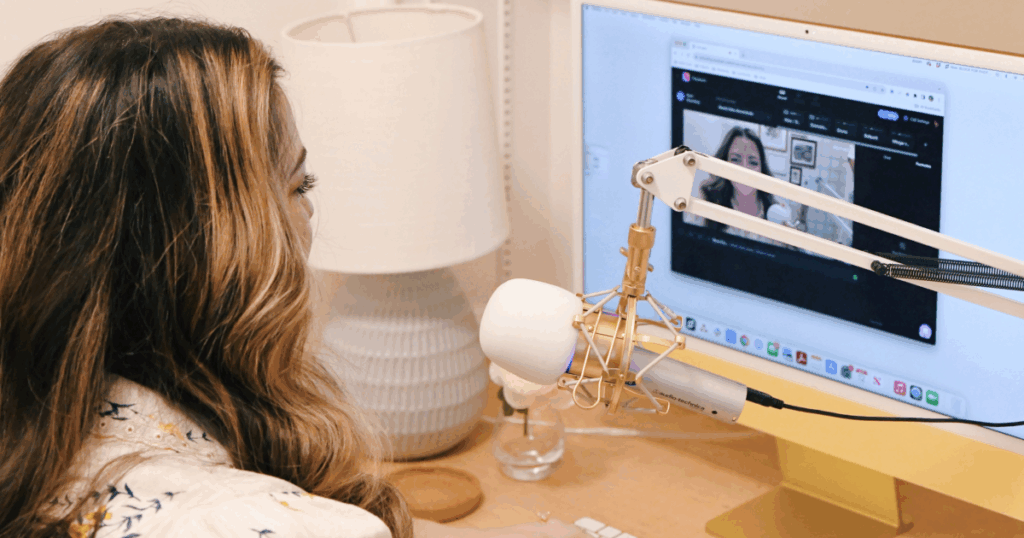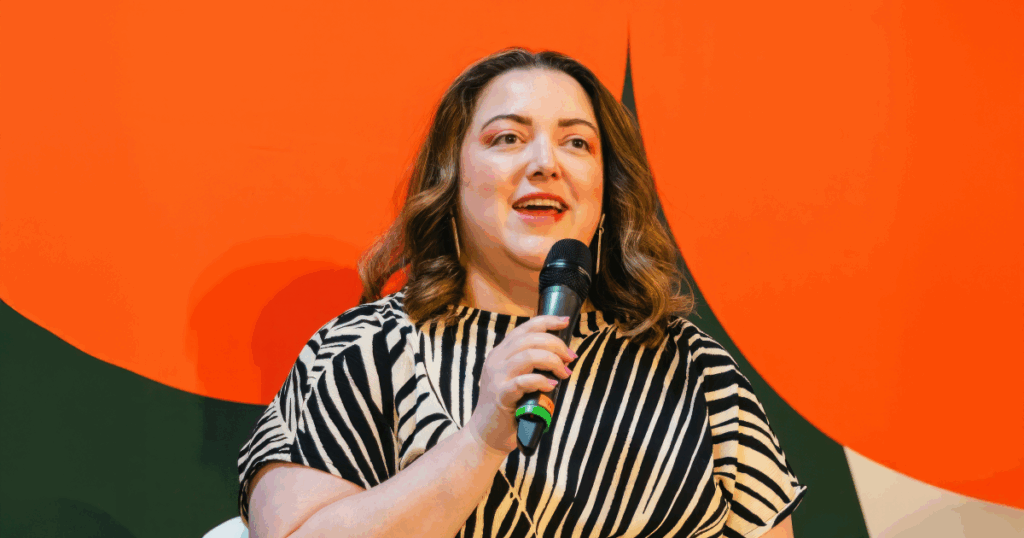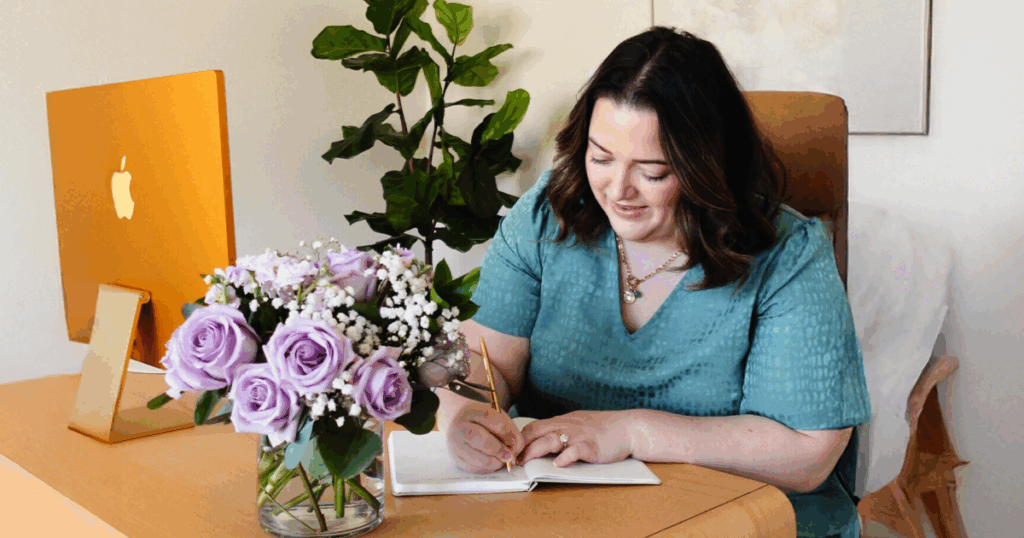Abagail Pumphrey is doing just fine.
“Sunshine makes me happy. Slow mornings make me happy,” she says. “Time with my spouse makes me happy. Spending time with my dogs and hiking isn’t really work, because I love what I do. It’s not necessarily the thing that makes me feel good in the morning. So I try to fill my life with as much living as possible.”
Pumphrey has arrived at a place most people dream of: a life where contentment holds more value than hustle. One thing you learn about her right away: she’s got a lot going on, all the time. On Zoom, she’s dialed in and conversational, a total pro at the art of the chat. She’s polite and focused, but her eyes give it away; there’s a flurry of messages lighting up her screen just out of view. Still, she lets them hang in the balance, because this chat is her priority.
Doing your own thing takes a lot of gumption and a willingness to admit, “There is no safety net,” then deciding, “You know what, I like walking a tightrope.” So far, that circus-level risk is paying off in a lot of peanuts.
The Empire

Pumphrey isn’t just a compelling presence; she’s quietly built an empire. Her podcast, The Strategy Hour, has garnered over 4 million downloads across nearly 1,000 episodes since its launch in 2016. Her company, Boss Project, is meant to help those high performers with big potential.. (No big deal.)
The Boss Project helps entrepreneurs build sustainable, scalable businesses through innovative systems, digital products, and authentic connections. They use a margarita-blend strategy with empathy, helping creatives, coaches, and consultants grow without flaming out. On The Strategy Hour, Pumphrey candidly discusses the realities of business ownership, including the wins, pivots, and occasional setbacks. Both Forbes and Inc. have listed The Strategy Hour as one of the best podcasts.
Despite the success, it hasn’t all been smooth sailing. “I became incredibly aware of just how reliant everything I had built was on me,” she says. That realization prompted her to adopt systems thinking and focus on long-term sustainability. Now, she’s leaning into AI-testing tools she believes will “completely revolutionize small businesses.”
Graphic Design is her Passion (Really, Though)

Before becoming Boss Project, Pumphrey worked in design, attending school for fine art and serving as a production designer before launching her agency. After working in-house for a few companies, she moved on to other pastures, but remains a lover of art. “I think of what I do a lot as design first, because how things are seen and used is an essential part of any user experience.”
After discussing sculptors like Calder and her love of graphic design, it’s apparent there’s a lot more going on than meets the eye — no pun intended. “I’m drawn to other graphic designers, probably because I’m biased. I think they’re some of the most overlooked artists out there. They’re often seen more as production workers than creatives. People like Saul Bass, Paul Rand, and Chip Kidd — they’re all great. Graphic design is viewed as functional. Same with architecture, but architects get more recognition.”
She’s such a design nerd that she even stopped by The Walmart Museum. “I went to Bentonville, Arkansas, and there’s a Walmart museum there, because that’s where their headquarters are — they have package design from all these different eras, and that was so cool; you know what was on the shelves in the 1950s versus today, wildly different. I loved it.”
The Social Media Origin Story

She didn’t set out to become part of the social media world; it happened naturally. Even before attending design school, Pumphrey had a passion for photography and documenting everyday life. She was the one who always took pictures, worked on the yearbook, and captured moments. After school, she realized that if she wanted her story told, she’d have to tell it herself. Social media became a natural outlet for sharing what she was doing and learning, primarily for her reflection and growth. The audience came later, almost by accident. Once it did, she adjusted her approach, but building a following was never the original intention.
By creating and understanding the fickle world of social media, she constructed what became Boss Project. “My goal is to help business owners build sustainable businesses, not ones built on hustle and burnout. I want people to grow in a way that supports their current life and future goals without sacrificing their well-being, family, or time with friends. It’s not getting as big as possible; it’s creating the freedom and flexibility to spend your time the way you want.”
Having interviewed some individuals over the years who sell snake oil, it’s an interesting paradigm that Pumphrey believes in. Many people are trying to sell ideas and schemes to increase their follower count, but also profit from the illusion of success, which makes others desire the same perceived wealth. They see the social media world as a gold rush, believing they can unlock secrets. She continued, “I don’t want that. I’ve seen it. I know how it works. I could do that. I already live in my dream house. Do I need more than that?”
It’s the kind of clarity that comes with time and lived experience. She excelled in B2B sales, reportedly securing more than $4.5 million in new revenue, so much for being a broke artist. But she also survived a severe car accident in 2016 that resulted in a traumatic brain injury. She rebuilt her business with flexibility and systems in mind, prioritizing sustainability and allowing life to come first.
Against the Grindset

It’s important to note that Pumphrey’s approach contrasts with the “grow at all costs” mentality prevalent in Silicon Valley, where numbers must continually increase or risk falling behind in a competitive environment characterized by skewed metrics. If anything, it signals that burning out to make a dollar isn’t the path forward, as the line between tech and social structure — and the fallout of both — becomes symbiotic. As Camus said, “The very forces of matter, in their blind advance, impose their own limits,” and that feels directly against some of the “grindset” we’ve learned to idolize.
The online business world is unpredictable; Pumphrey has worked with clients who run a wide range of companies, including florists, event planners, graphic designers, marketing experts, and more niche fields. One client, for example, coaches families through the death process, offering guidance similar to a hospice social worker, but with a focus on end-of-life and estate planning. The range of businesses she supports is extensive, but what they all have in common is the potential to grow their online presence.
When asked what advice she’d give to someone just starting with a small social following — say, 500 followers on TikTok — she didn’t hesitate. “Ten years ago, people didn’t start by growing a following. They started with a clear offer,” she said. “They knew who they were, what they were selling, who they were selling it to, and how much it cost. Some even had the full client experience mapped out before they officially launched. And they didn’t need massive reach. Two to four clients a month could make you six figures.”
That’s where many creators go wrong today, she explained. “Now it’s all about building a following first, but for what? Most people don’t even know who they’re trying to attract or why. They ignore what they already know and try to become some totally new version of themselves. But it’s a lot easier to grow when you start from what you already do well.”
That’s how she launched her own business. With a decade of experience as a corporate graphic designer, she leveraged her existing knowledge and skills. “That was the fastest path to income,” she said. “Eventually, I pivoted, but that first step was rooted in my existing skill set.”
The Day That Changed Everything

However, building a business wasn’t without challenges, and one of the biggest challenges arose early. “A year or so in, I was in a five-car collision and suffered a traumatic brain injury,” she said. “The business was profitable, but it was completely reliant on me. If I wasn’t working, there was no income.”
That realization changed everything. “From that point on, I focused on building something more sustainable. Not necessarily removing myself entirely — that’s hard, especially with a personal brand — but I had to create systems that allowed the business to keep going even if I needed to step back.”
This meant shifting from one-on-one client work to more scalable offerings, including courses, memberships, and educational content. “The wreck forced me to reevaluate everything. It wasn’t just about money — it was about my life. The recovery took five years. I might’ve been 70–80% better within the first year and a half, but that last 20% took years.”
The Coaches Have Coaches Now

The mindset of the “why” is massive. Currently, many people are trying to hawk their vision of what making it is. As of 2022, there were 109,200 certified coaches worldwide, up from 71,000 in 2019 — a 54% increase in just three years. By 2024, the figure had climbed to approximately 145,500 active coaches, with projections estimating around 167,300 in 2025, according to CoachRanks. That’s a lot of folks with a lot of big promises and those willing to abide in hopes of seeing a form of success.
For women in the digital world, it’s still a scene dominated by the Bros in vests and their private jet moments. The walk is upward, but she’s attacking the algorithm, doing what she can against the powers that be and their online identities. That couples with the fear of burnout, but also the reality that a pivot may be necessary. The business is a crowded market. There are existential demands everywhere, all the time.
When asked about burnout, she offered, “A lot of the time, it’s more about slowing down and giving yourself breathing room. White space helps with everything. And so it’s often that self-induced pressure to do more and create more and produce bigger results, bigger numbers, all of that stuff, when most of the time, it’s not fully necessary to continue to sustain what you’ve already done.”
Seth Godin, one of the most prominent voices in the new era of business, laid it out similarly in his approach to life on his terms: “Instead of wondering when your next vacation is, maybe you should set up a life you don’t need to escape from.”
She’s quick to point out how exhausting it can be to keep up with the ever-changing world of online education. “It’s one thing after another,” she says. “First it’s a tiny course, then a signature program, then a group coaching offer, then a mastermind; it all comes in waves.” Certain formats catch fire during specific eras, mainly because that’s what the majority of people are doing. “But the pressure to constantly reinvent yourself every time a new trend disrupts buyer behavior? That part gets old fast.”
She continued, “My younger self was apprehensive about financial security. I grew up with two parents on disability. I put myself through college. I came out on the other side, broke as a joke with debt from student loans. And I was like, I don’t know how I’m gonna fall out of this. I don’t know how I’ll ever be able to afford a house or the things I want in life. I wish I had spent less time worrying about my financial needs and more time feeling empowered to be creative, and the money will figure itself out. And that’s maybe a privilege. It worked out for me, but I also worked really hard, and it was something I was incredibly terrified of screwing up.”
The Empire Can Wait

Now, she’s negotiating book deals and talking to some of the biggest minds in an ever-developing space. A sunny day, a good cup of coffee, and maybe some art — perfect for most of us. As our call ends, she looks at the Slack pings flooding her screen.
Build the life first. The empire can wait.





